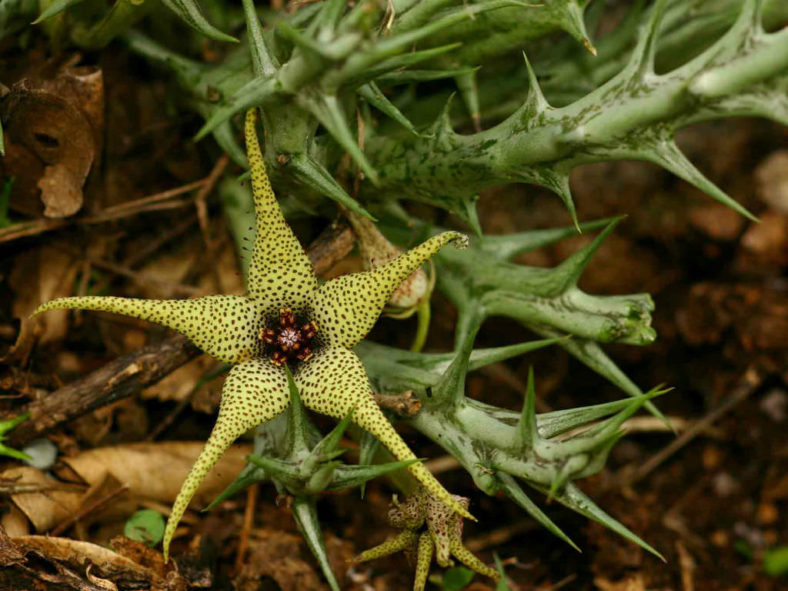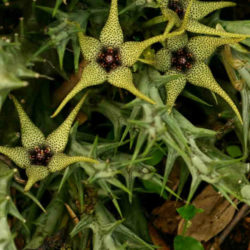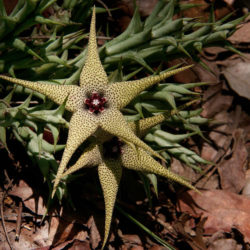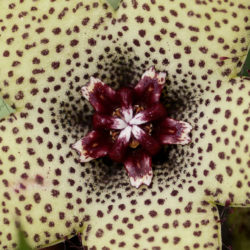Scientific Name
Orbea caudata subsp. rhodesiaca (L.C. Leach) P.V Bruyns
Synonym(s)
Caralluma caudata subsp. rhodesiaca, Ceropegia caudata subsp. rhodesiaca, Orbeopsis caudata subsp. rhodesiaca
Scientific Classification
Family: Apocynaceae
Subfamily: Asclepiadoideae
Tribe: Ceropegieae
Subtribe: Stapeliinae
Genus: Orbea
Description
Orbea caudata subsp. rhodesiaca is a low-growing succulent that produces many greyish-green, dark green mottled stems with four rounded angles lined with long, softly, spine-like teeth. The branched stems are erect, ascending, or decumbent, up to 4 inches (10 cm) long and up to 0.4 inches (1 cm) thick, excluding teeth. This subspecies has longer teeth than Orbea caudata subsp. caudata. They are spreading or upcurved, up to 0.4 inches (1.5 cm) long.
Flowers are star-shaped, very deeply five-lobed, up to 3.6 inches (9 cm) in diameter, and appear solitary or in clusters of several near the base of the young stems in late summer or fall. The corolla is creamy-yellow, mottled with brownish-red or purple, with lobes often fringed with paddle-shaped purple hairs.
Origin
Orbea caudata subsp. rhodesiaca is native to Zimbabwe, northern Botswana, and Namibia (Caprivi).

Hardiness
USDA hardiness zone 9b to 11b: from 25 °F (−3.9 °C) to 50 °F (+10 °C).
How to Grow and Care
Several species are fairly easy to grow. Others, often those with slightly hairy stems and the more unusual flowers, are more challenging and require careful watering (with some fertilizer) during the growing season and complete withdrawal of water during the winter months. A minimum winter temperature of 10°C (50°F) is acceptable, providing that plants are kept absolutely dry. A heated growing bench or incubator may help delicate plants to get through the colder months. However, many species live under shrubs in their habitat and prefer light shade rather than full sun.
A gritty compost is essential, and clay pots are advisable for the more delicate species. Some growers prefer mineral-only compost to minimize the chance of a fungal attack on the roots. A layer of grit on the surface of the compost prevents moisture from accumulating around the base of the stems.
Keeping Stapelias and their roots free of pests such as mealybugs is the real key to success, as fungal attack often occurs due to damage to stems by insects.
See more at How to Grow and Care for Stapelia.
Links
- Back to genus Orbea
- Succupedia: Browse succulents by Scientific Name, Common Name, Genus, Family, USDA Hardiness Zone, Origin, or cacti by Genus
Photo Gallery
Click on a photo to see a larger version.


